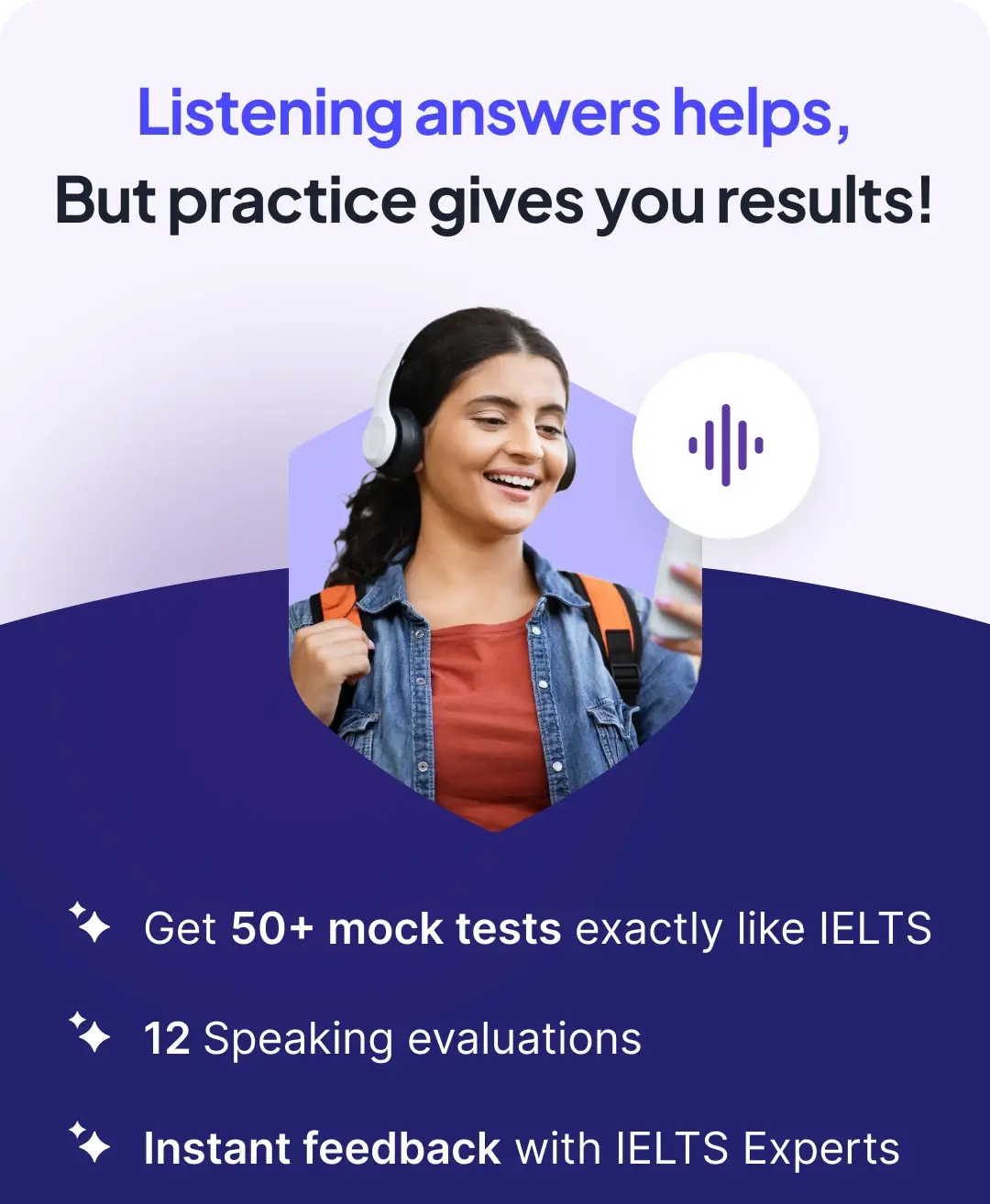Describe A Place Where You Are Able To Relax: IELTS Speaking Cue Card
You should say
- Where is it?
- What is it like?
- How often do you go there?
- And how do you feel about the place?
39 unique answers with expert feedback
Band 7
00:00
/
00:00
Follow up questions
Follow up questions
What activities do you enjoy doing in the village besides swimming and fishing?
How does visiting this village help you relax compared to your life in the city?
Do you think it's important to have a place to relax? Why or why not?
Band 6-7
00:00
/
00:00
Follow up questions
Follow up questions
What other places do you find relaxing?
How do you usually feel after visiting this temple?
Do you think relaxation is important for everyone?
Band 6-7
00:00
/
00:00
Follow up questions
Follow up questions
What activities do you enjoy doing at home to relax?
How does your family contribute to your relaxation at home?
Do you think it's important to have a place to relax? Why?
Practice other cue cards
Band 6-7
00:00
/
00:00
Follow up questions
Follow up questions
What activities do you enjoy doing in Thane with your friends?
How does your current place in Panvel compare to Thane?
What kind of music do you like to listen to while relaxing?
Band 6-7
00:00
/
00:00
Follow up questions
Follow up questions
What specific activities do you enjoy doing in Istanbul?
How does the atmosphere in Istanbul contribute to your relaxation?
What other places do you find relaxing besides Istanbul?
Cue 1:Where is it?
- Begin by clearly stating the location of the place where you relax.
- Mention any notable landmarks or features that make it easy to identify.
Example
The place where I am able to relax is a beautiful park located in my neighborhood, called Nehru Park. It’s just a ten-minute walk from my house, making it very accessible.
Cue 2:What is it like?
- Describe the atmosphere and environment of the place.
- Include details about the sights, sounds, and any activities that take place there.
Example
Nehru Park is a serene and green space filled with tall trees and colorful flowers. There are walking paths, a small pond with ducks, and benches where people can sit and enjoy the view. The sound of chirping birds and the gentle rustle of leaves create a peaceful ambiance.
Cue 3:How often do you go there?
- Mention how frequently you visit this place and the reasons for your visits.
- You can also talk about specific times or occasions when you prefer to go.
Example
I try to visit Nehru Park at least three times a week, especially in the evenings after work. It’s my way of unwinding and disconnecting from the hustle and bustle of daily life.
Cue 4:And how do you feel about the place?
- Share your personal feelings and experiences related to the place.
- Explain why it is important to you and how it contributes to your well-being.
Example
I feel a deep sense of peace and happiness whenever I am at Nehru Park. It’s my escape from stress, and I often find inspiration for my creative projects while sitting there. The beauty of nature rejuvenates my spirit.
Conclusion
Example
In conclusion, Nehru Park is not just a place for me to relax; it’s a sanctuary where I can recharge and reflect. I believe everyone should have a special place like this in their lives.
Following this structure will ensure you cover all the essential points while providing a clear and engaging response to the cue card topic.
Tips to answer this Cue Card
1: Vague Descriptions
Using vague language can make your answer less engaging. It's important to provide specific details about the place to create a clearer picture for the examiner.
Tip
Use descriptive adjectives and specific examples to illustrate what the place looks like and why it helps you relax.
2: Ignoring the Cues
Failing to address all the cues can lead to an incomplete answer. Each cue is designed to help you structure your response effectively.
Tip
Make sure to answer all the cues in your response, linking them together to create a cohesive narrative about the place.
Overly Short Answers
Providing overly brief answers can make it seem like you have nothing to say. This can negatively impact your fluency and coherence scores.
Tip
Expand on your answers by adding personal feelings, experiences, and reasons for why the place is relaxing to you.
IELTS Cue Cards asked last week
Reported by Leap students who gave IELTS
All Answers
Here are all the answers by real-users practicing speaking for IELTS Cue Cards on our IELTS Prep App.
Band 7
Band 6-7
Band 6-7
Band 6-7
Band 6-7
Band 6-7
Band 6-7
Band 6-7
Band 6-7
Band 6-7

Explore
473 Cue Cards

Personal Experience
121 Cue Cards

Describing People
66 Cue Cards

Travel
47 Cue Cards

Personal Development
45 Cue Cards

Hobbies/Interests
44 Cue Cards
Environment/Culture
39 Cue Cards

Tech/Media
27 Cue Cards

Education/Work
19 Cue Cards

Social Issues
19 Cue Cards

Describe An Object
16 Cue Cards
Business/Shopping
16 Cue Cards

Food/Cooking
8 Cue Cards
Fashion
6 Cue Cards
Master IELTS Speaking with Leap's Self-Prep Course
Students Enrolled
2,411 Reviews

Master IELTS Speaking with Leap's Self-Prep Course
Students Enrolled
2,411 Reviews



